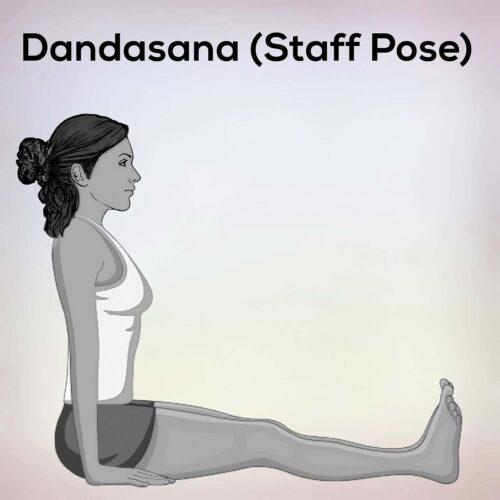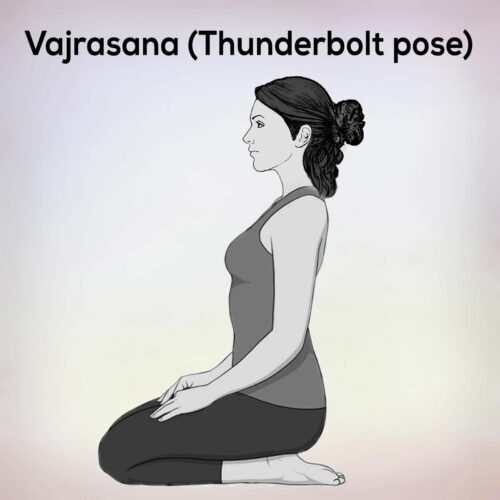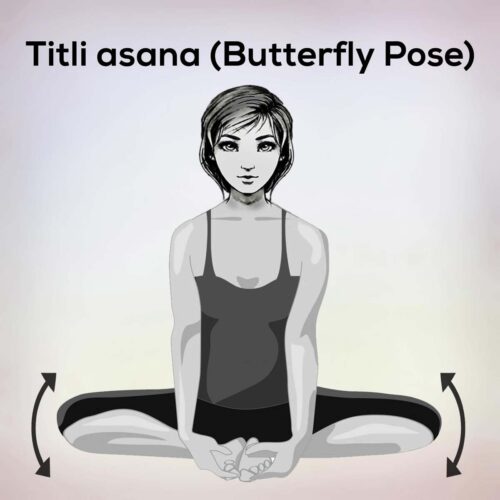Anantasana (Side Reclining Leg Lift Yoga Pose): Steps, benefits, and precautions
Anantasana generally, “Anant” means infinite and is one of the many famous names of Lord Vishnu. When you do Anantasana, your body resembles the resting posture of Lord Vishnu.
Anantasana is called by many names, Like In Sanskrit Anantasana, and Anant One Pose, Side Reclining Leg Lift, Sleeping Vishnu Pose, Infinite yoga pose, etc.
Note: This posture depicts Lord Vishnu who is believed to be the absolute truth. And so by practicing this mudra, we connect the breath in a spiritual way, while realizing that the body is perishable.
Anantasana stretches your legs and at the same time, it is also famous for its balanced position. This asana appears to be extremely easy, but finding peace requires flexibility, strength, and balance. It encourages practitioners to dive deeper and seek the depth of intuitive knowledge.
This article explains the benefits of Side Reclining Leg Lift Yoga Pose and the right way to practice it. The precautions to be taken while practicing this asana are also discussed.
Let us know the steps to practice Anantasana Pose and its various benefits.
1)- Side Reclining Leg Lift Yoga Pose Steps: The right to do Anantasana
2)- Benefits of Side Reclining Leg Lift Yoga Pose
3)- Precautions for Anantasana
Side Reclining Leg Lift Yoga Pose Steps: The right to do Anantasana
To practice Anantasana in the right way, follow the steps given below:
1)- The first step, lie flat on your yoga mat and slowly turn to the left. When you are taking this position you have to stabilize yourself.
2)- Inhale and balancing the body on the left side, bend the elbow towards the left side and with the support of the head with the hands, spread the legs fully backward and lie down on the hips.
3)- Inhale and hold the right foot up with the claws of the right hand and lift it up and stretch the legs towards you and bring the hands out completely into the Anantasana.
4)- Inhale to loosen the grip on the toes with your hands, exhale to engage the forward muscles. The entanglement of the core muscles is done by pulling the belly (navel) inward but without stopping the breath.
5)- Approx. in this posture for about 5 to 10 breaths, control the breathing process while keeping the body in balance.
6)- Now similarly, while lying on the sides of your hips and torso, turn right. Inhale and hold your toe with your left hand and raise the left leg up. Stay in balance for 5 to 10 breaths.
7)- When you do it easy from both sides, then you will come back to rest and relax.
Benefits of Side Reclining Leg Lift Yoga Pose
Anantasana has some excellent benefits. The points given below are as follows.
- This makes your leg muscles and spine more flexible.
- It helps in reducing the weight of your thighs and hips.
- Through this asana, there is a good circulation in your feet.
- Anantasana helps in reducing tension and stress from your body.
- Anantasana helps in developing your pelvic area.
- Anantasana tones your abdominal muscles, improves your digestive power and improves your stomach.
- Infinite yoga postures increase your hamstrings and strengthen the part of your leg and the sides of your torso.
- It beneficial in hypertension, sciatica, arthritis, and colitis.
- Anantasana helps to cure the problems related to the prostate, bladder, ovary, and uterus.
Precautions for Anantasana
Side Reclining Leg Lift Pose (Anantasana) may be good for your health, but here are some here are some precautions you should follow:
- Remember, avoid this posture if you have pain or injury in your neck, shoulders or back. If you feel any severe pain during this posture, then release it slowly.
- If you have any kind of injury to your knee, then you should avoid practicing this asana.
- Avoid this asana if you are suffering from high and low blood pressure.
- During exercise, if you feel any pain or discomfort, please get out of the posture and seek the guidance of a yoga expert and the advice of a doctor.
- According to yoga experts, this asana is considered best when yogis practice early in the morning. Along with digesting food, the body also gets the energy to do asanas. If for some reason you are unable to do it in the morning, then you can practice this asana in the evening. But at least there should be 3-5 hours difference between your exercise and food.
Legal Disclaimer: Before participating in any exercise program or using any fitness products or services that may be described and/or made accessible in or through the Nexoye Website and/or the Services, you should consult with a physician or other healthcare provider.
















